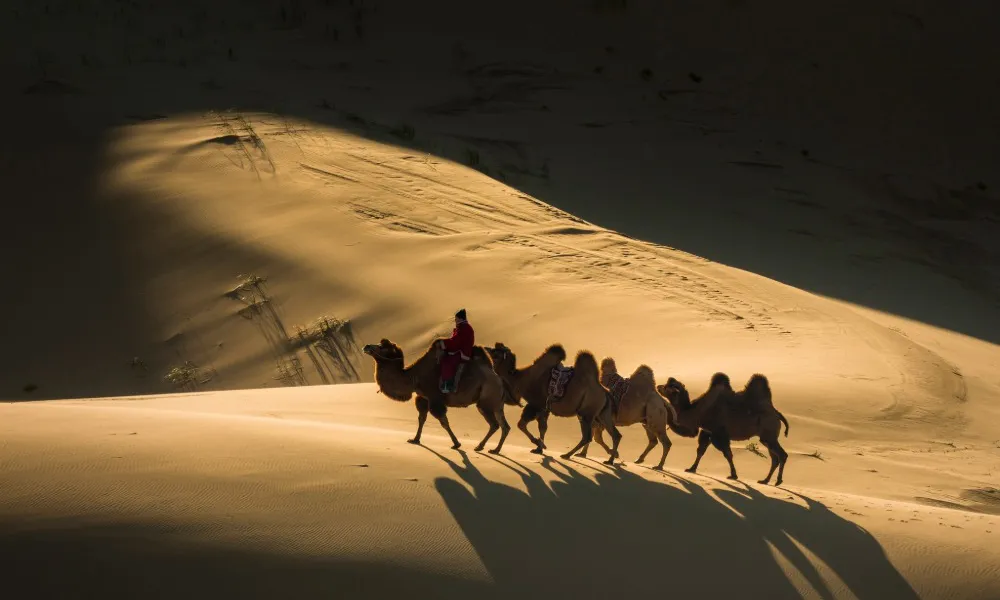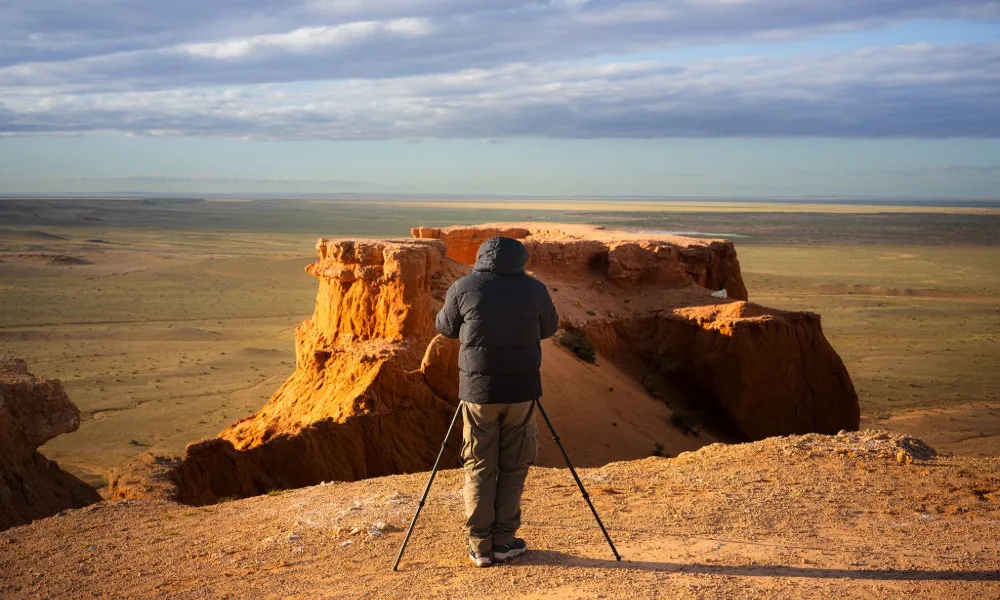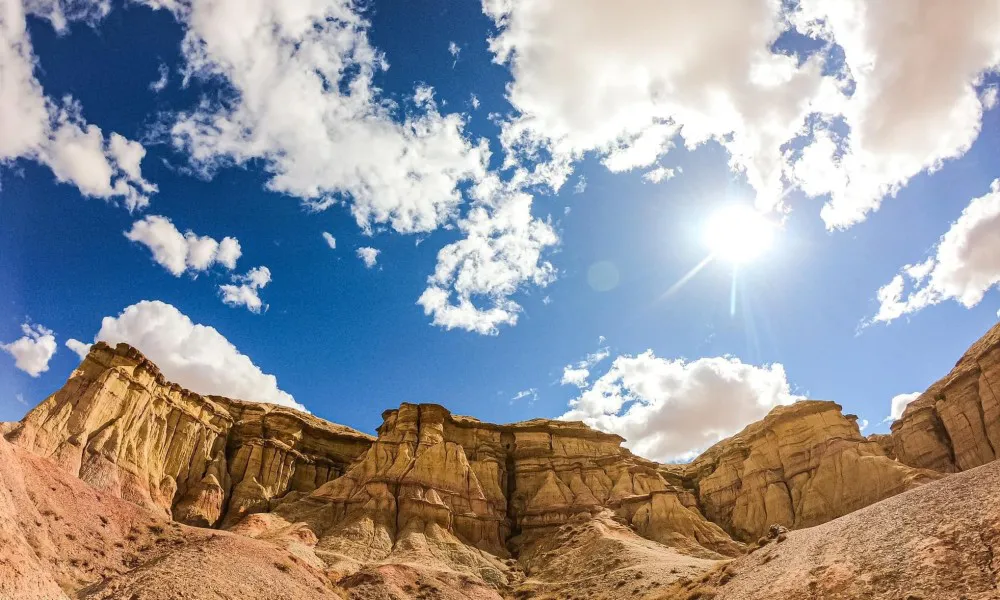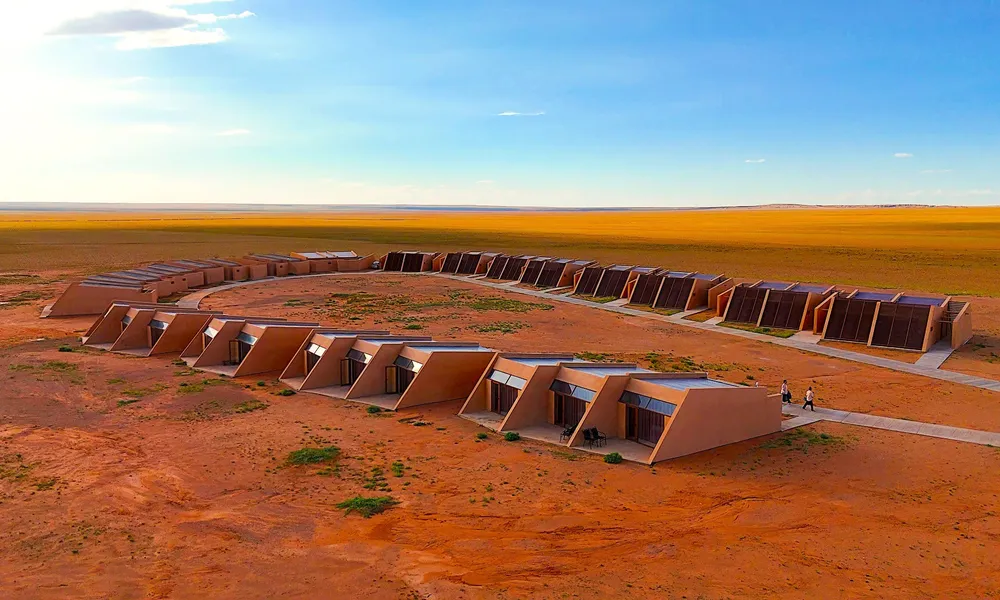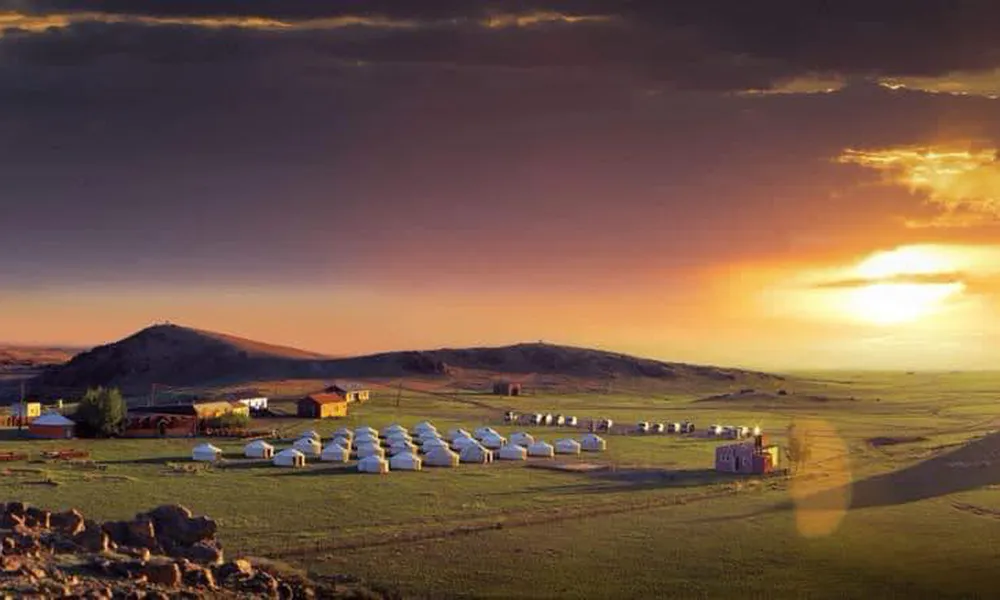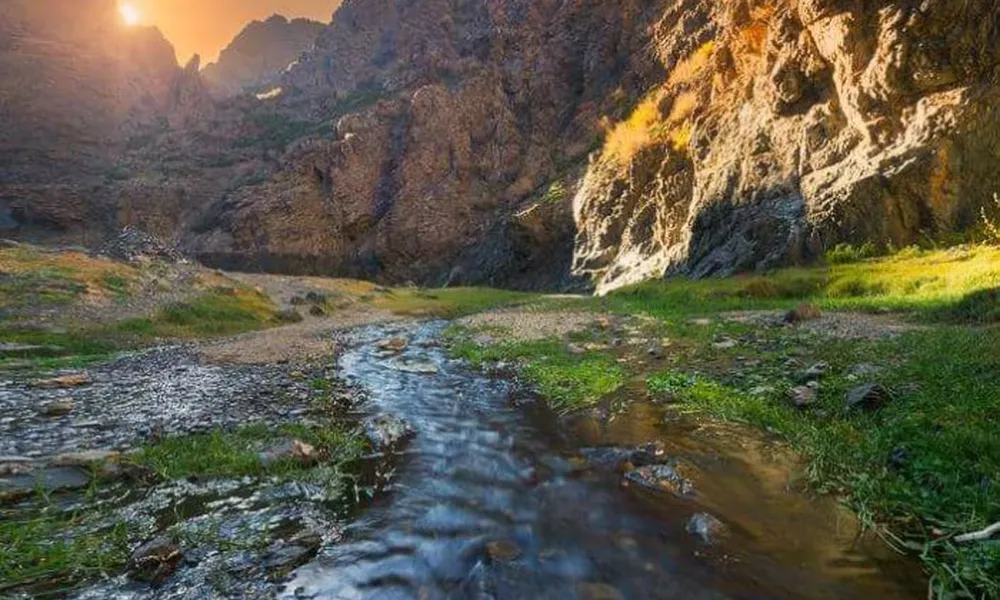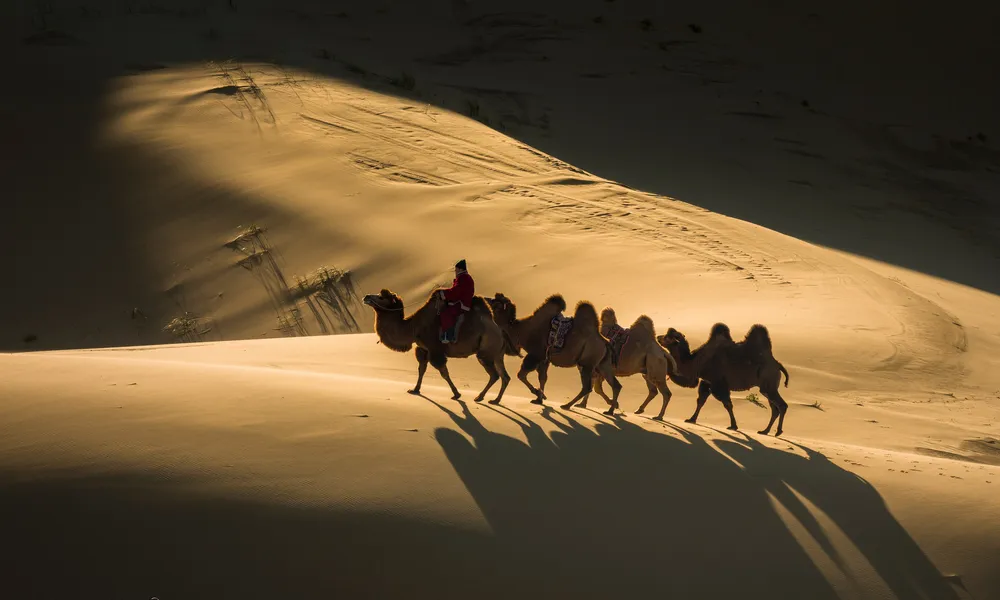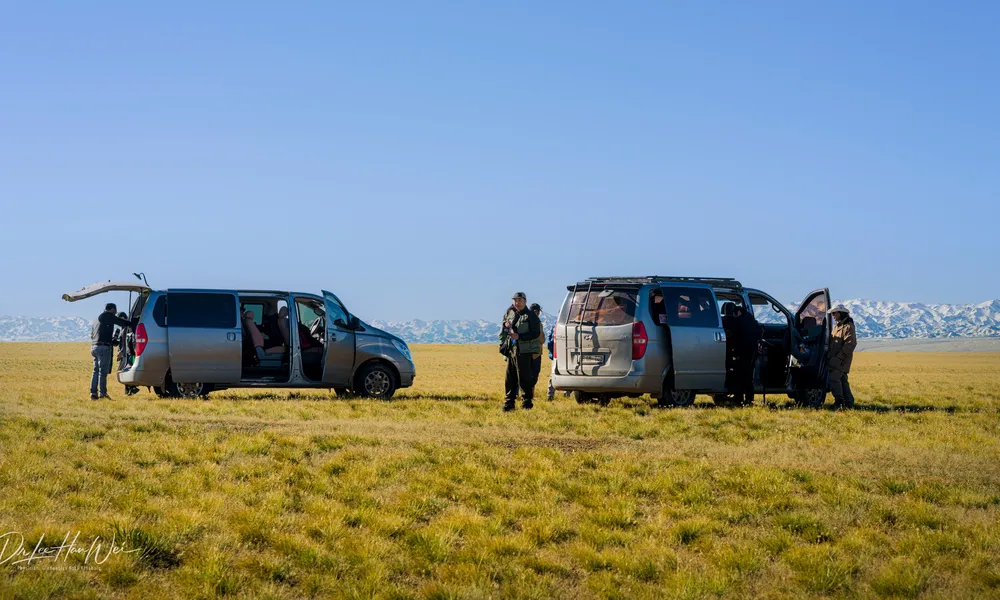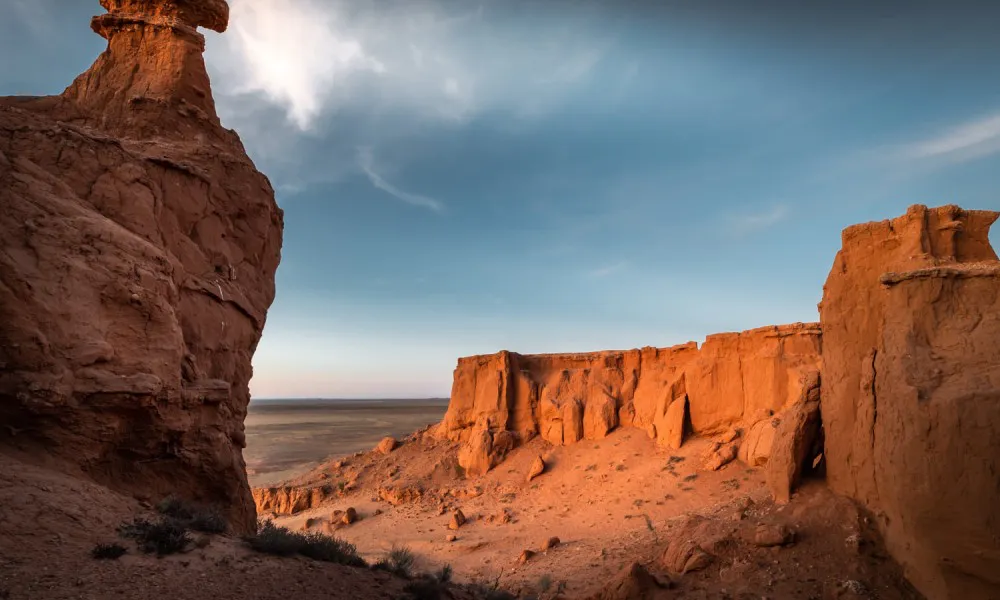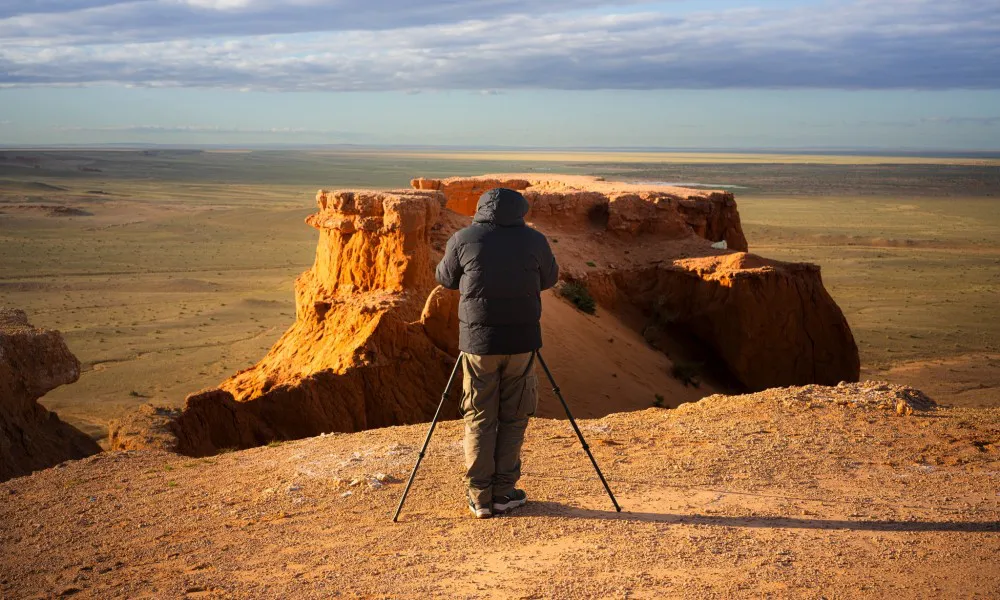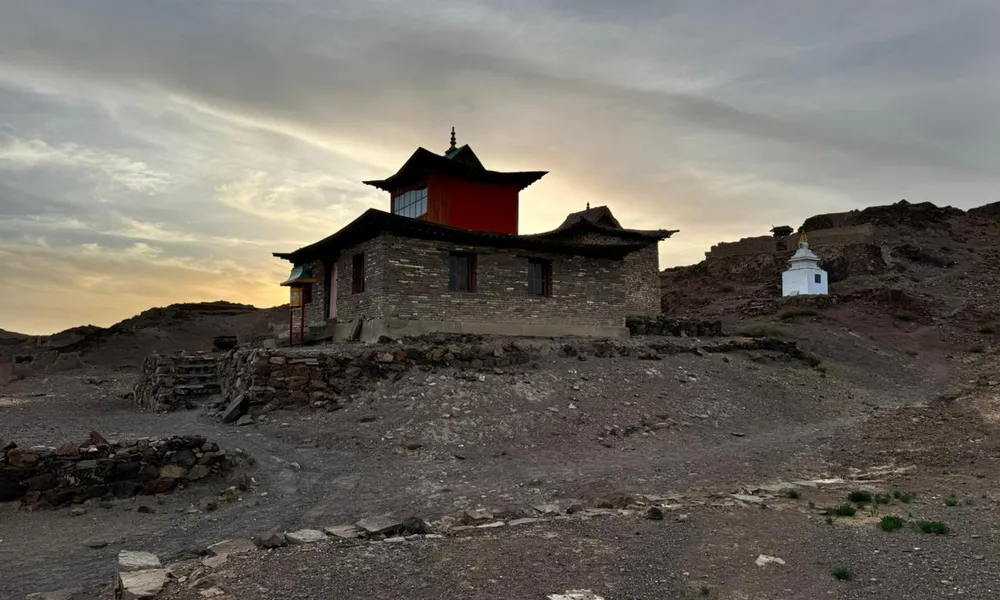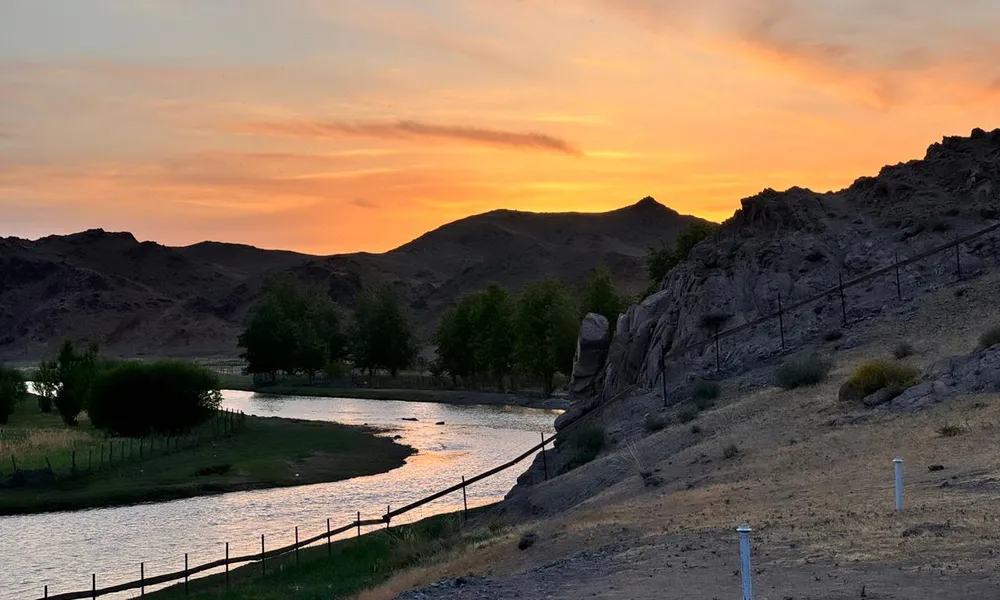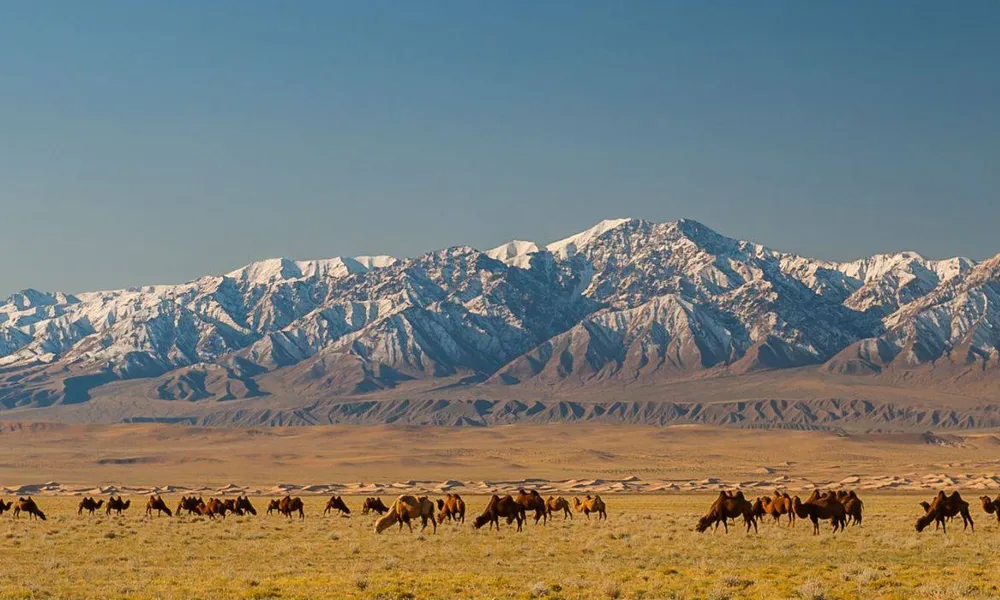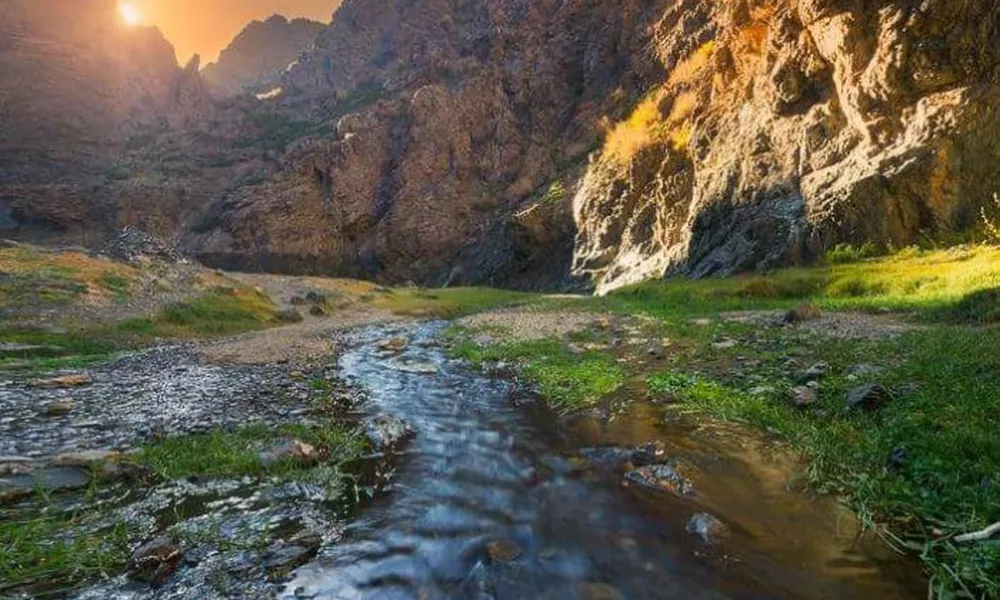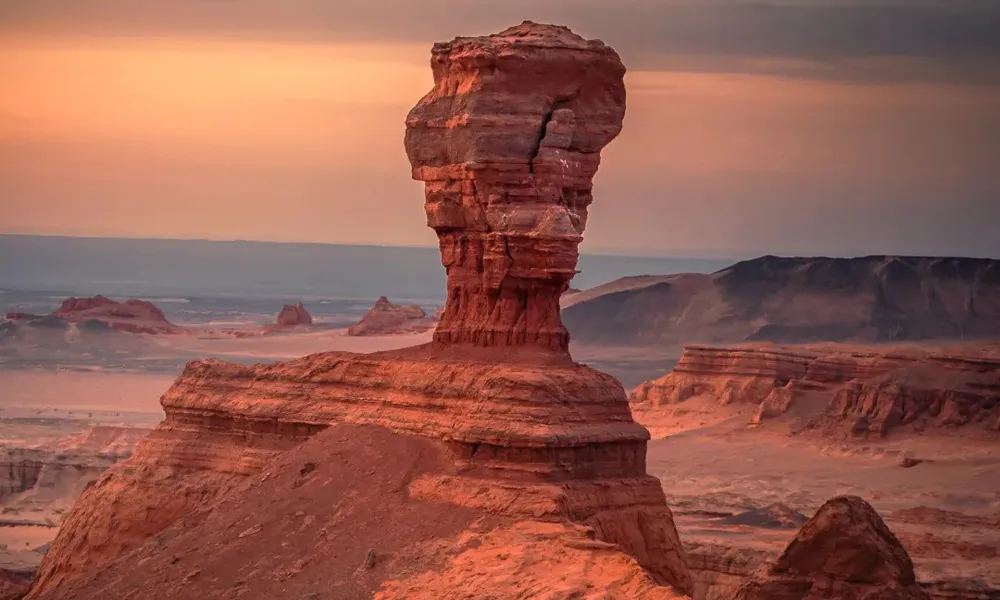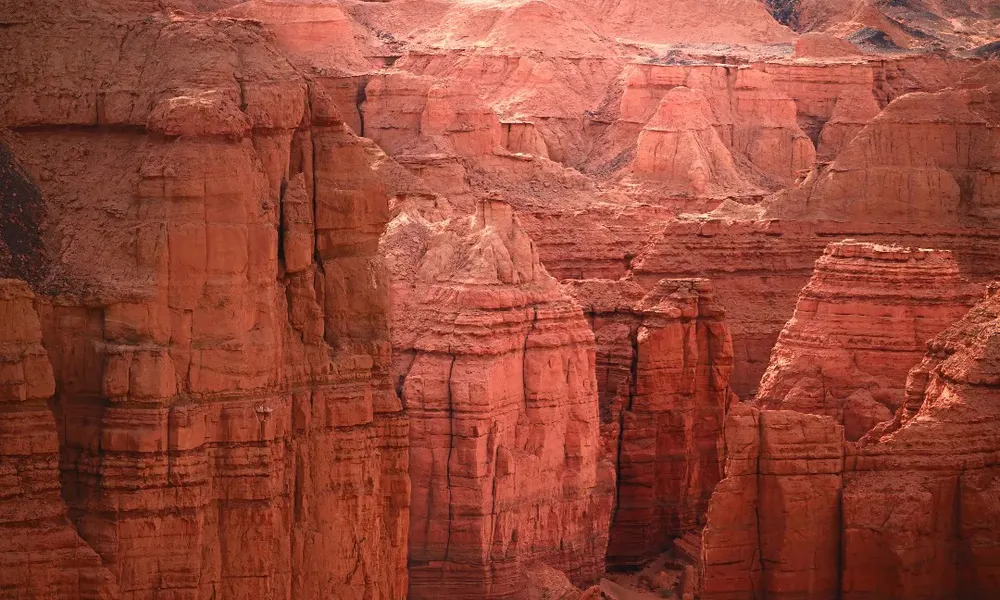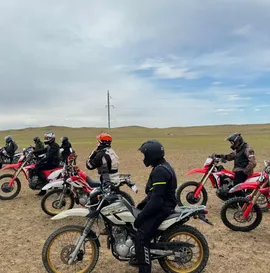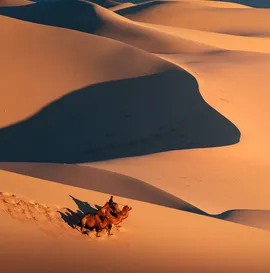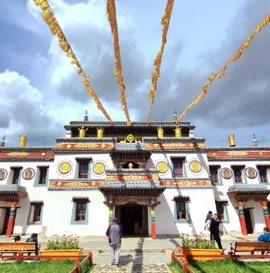South Mongolia
Is Mongolia’s southern frontier, vast, arid, and deeply nomadic.
Bordering China, it spans five provinces: Umnugovi, Dornogovi, Bayankhongor, Govi-Altai, and Dundgovi, with a combined population of around 300,000. It’s the country’s warmest, driest region, with summer highs reaching 45°C and winter lows dropping below –35 °C.
Nomadic families raise camels, goats, sheep, horses and yaks across immense distances. Wildlife thrives too, khulan, black-tailed gazelles, argali, and elusive predators like lynx and snow leopards.
Tourism here is quiet and expansive: camel treks, fossil-rich cliffs, star-filled skies, and encounters with herding families. Towns are sparse, roads are rough, and the horizon never ends.
South Mongolia is not just a desert it’s a living landscape of movement, resilience, and timeless wonder.
Tsagaan Suvarga (White Stupa)
Is a striking limestone escarpment in Dundgovi province, about 420 km south of Ulaanbaatar.
Rising up to 60 meters high and stretching 400 meters, its layered cliffs resemble a row of white stupas carved by wind and time. Once part of an ancient seabed, the area is rich in marine fossils, including crab shells, coral fragments, and other remnants from a prehistoric ocean.
Visitors can hike scenic trails, explore the nearby Khevtee Bosoo Cave, and visit Del Uul, a sacred mountain with thousands of petroglyphs and burial sites. The cliffs glow dramatically at sunrise and sunset, making it a favorite for photographers and geology enthusiasts.
Eagle Valley (Yolyn Am)
Is a dramatic ice-filled canyon in the Gobi Gurvan Saikhan Mountains, located about 62 km west of Dalanzadgad in Umnugovi province. Named after the Yol (Lammergeier), a majestic bearded vulture, the gorge is known for its towering cliffs, rare wildlife, and cool microclimate.
Visitors can hike or ride horses through the valley to reach its narrowest point, where ice survives deep into summer, even in July, shaded by steep rock walls. The area is home to argali, ibex, pikas, and birds like Altai snowcock and wallcreeper, with snow leopards occasionally spotted in the surrounding peaks.
Yol Valley offers a refreshing contrast to the surrounding desert an oasis of shade, silence, and biodiversity.
Khongor Sand Dunes
Known as “Singing Sands,” are the tallest dunes in Mongolia and one of 33 major sand dune formations in the Gobi Desert.
Located in Umnugovi province, they stretch over 180 km in length and rise up to 300 meters high, with steep slopes that hum when dry sand cascades creating a deep, resonant sound.
The name Khongor also refers to a beige-colored horse in Mongolian, evoking the dunes’ soft, golden tones. At the northern edge lies Khongoryn Gol, a rare desert stream that nourishes a green oasis where Bactrian camels, horses, and nomadic families gather.
Visitors can climb the dunes, ride camels, and witness breathtaking sunsets over the golden sea of sand.
Bayanzag (Flaming Cliffs)
Is a world-renowned fossil site in South Gobi province, about 90 km northwest of Dalanzadgad.
Its glowing red sandstone cliffs earned their nickname from the way they blaze at sunset. The name Bayanzag means “rich in saxaul,” referring to the hardy desert trees that thrive here.
In 1922, explorer Roy Chapman Andrews discovered the first scientifically recognized dinosaur eggs at Bayanzag, along with fossils of Velociraptor, Protoceratops, and other Late Cretaceous species. The site remains a treasure trove for paleontologists.
Visitors can walk among fossil-rich cliffs, explore saxaul groves, and take in sweeping desert views shaped by millions of years of erosion.
Ongi Temple
Ongi Monastery (Ongiin Khiid) is a historic Buddhist site in Dundgovi province, once one of Mongolia’s largest desert monastic complexes.
Founded in 1660 along the Ongi River, the only river in Mongolia that manages to flow deep into the desert, the monastery once housed over 1,000 lamas monks, with more than 30 temples and four Buddhist universities across two sites: Khutagt Monastery to the south and Barlim Monastery to the north.
In 1939, both complexes were destroyed during Stalinist purges, and over 200 monks were killed. Today, visitors can explore the ruins, a restored temple, a small museum, and a memorial stupa honoring those lost.
Set beside the river and surrounded by desert hills, Ongi offers a quiet, reflective stop between the Gobi Desert and central Mongolia a place of resilience, remembrance, and spiritual heritage.
Gobi Gurvansaikhan National Park- Gobi Three Beauties National Park
Is Mongolia’s largest protected area, spanning 27,000 km² across South Gobi province.
Named after the Three Beauties—Zuun, Dund, and Baruun Saikhan (2,815 m) it marks the easternmost reach of the Altai Mountains, a sub-system of the northern Himalaya.
The park blends alpine ridges and desert plains, with highlights like:
- Yol Gorge or Eagle Valley : shaded gorge with ice lasting into July
- Khongor Dunes: Mongolia’s tallest, stretching 180 km
- Bayanzag: fossil-rich Flaming Cliffs
Wildlife includes snow leopards, ibex, argali, and over 200 bird species. Nomads still herd here, keeping tradition alive in a landscape of extremes.
Khermen Tsav
Is a remote canyon of red sandstone in southern South gobi province, stretching 15 km long and 6 km wide, with cliffs up to 30 meters high.
It’s one of many “tsav” formations in the region, wind-carved desert canyons shaped over millions of years.
Once the floor of an ancient inland sea, Khermen Tsav is rich in dinosaur bones, eggs, and plant fossils dating back over 200 million years. It’s also home to the Agama lizard, a hardy desert survivor often seen basking on sunlit rocks, one of the few living reptiles in this fossil-rich terrain.
Its sculpted cliffs resemble temples, icebergs, and animals, earning it the nickname “The End of the World” from explorer Roy Chapman Andrews. With no water or settlements for over 250 km, Khermen Tsav is a true expedition site, silent, vast, and untouched.

